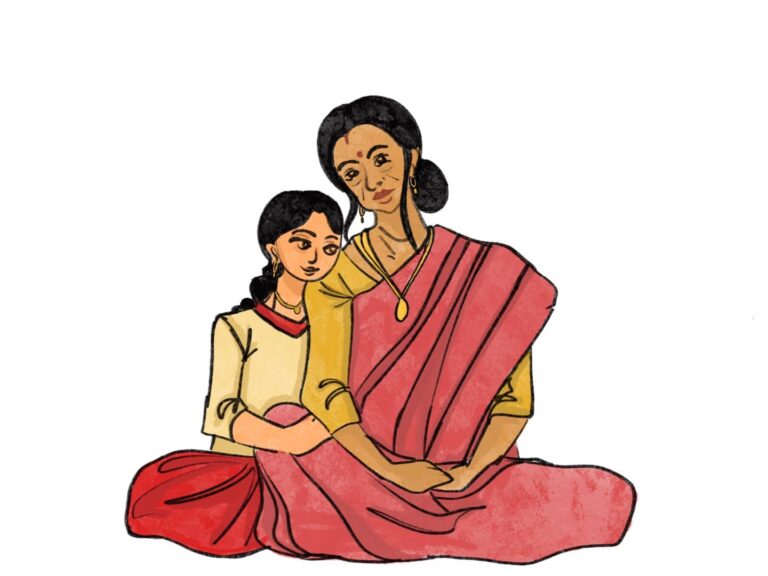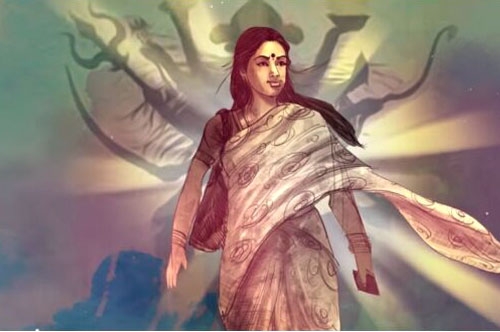How I got comfortable with my breasts

Rekha is a ‘Contributing Writer’ as the journal.
The difference between “chest” and “breasts” is called shame.
Most people, including myself, have been conditioned to call breasts chest. And by doing so, for the past how many ever years, I have denied even their existence. I would stop myself from saying that word and use “chest,” because it is more socially appropriate so that I wouldn’t cringe and die in the corner, out of embarrassment. I would only proudly use the other word if I was marinating a chicken breast. Somehow the word fitted perfectly in that world. You can’t say, “Rub some mashed garlic paste on the chicken chest.” Breast sounds fuller.
And it really is.
Yaa Gyaasi, an African American author, described breasts to be as soft as “mango flesh.” I have never looked at breasts the same way after that. That simple analogy made it relatable. Made it tangible. Made it close to home. Made it digestible. Suddenly I could feel my breasts soft, cold, and filled with pulp.
The way breasts are described in other books has always made it seem like a foreign element. Most of them focused more on the cleavage than the full breasts. And whoever did focus on the latter, always depicted them as “swollen” and “rising and falling.” The nipples were either “hard” or “protruding.” None of them ever made the breasts beautiful.
One can put 2+2 together and find out that this is a reflection of society’s mindset. As it is, women’s bodies are always a battleground. So it is not surprising that this happens. We apologize for it, more times than not, and find ourselves completely hideous.
We can’t say “breasts,” but we can say “boobs.” “Tits,” too. People around me continuously use the last two words, and I would get so offended for some reason. All the while, when I couldn’t even say “breasts.” I would try to quickly change the subject because I would be flushed or extremely embarrassed that they are talking about it.
When I had to refer to my own, I would say “chest” with an unsure, soft-spoken, low tone. Even I did not know what was wrong with me. I did not understand why I was feeling like I had to cover it up.
I would be in awe of people who could say “boobs” and “tits” with such a level of comfort and ease. How is that even possible when I am trying not to even think about it? As if I will manifest more “boobs” on my body…as if two wasn’t enough…
Don’t also get me started on how mortified I got, on the running track. Being an athlete, I had to jog a few times for warming up, and I used to make sure I was the last one out so that people don’t see my breasts going up and down. After the jog, I would place my hand there, just to see if it is still sitting on my body and have not dropped to the floor.
Shopping for bras was tedious, and like I am coming out of a wholesale market. I would buy bulk so that I don’t have to face them anymore. The headless mannequins, in the shops, also reiterated my point of breasts being something that was outside of our body. Faceless. Nameless.
The media doesn’t make it easy for us either. We are exposed to breasts that are pushed and puffed up. We are exposed to breasts that are way more rounder than it should be. We are exposed to breasts, in all honesty, that is fake. I hate to make a sweeping statement on supermodels and celebrities, but they are in our faces every single day — dancing with their additional layer of silicone implants inside their breasts. Putting on shimmer makeup to make it glow. And of course, taping it up to make it look more symmetrical.
In her advocacy to de-stigmatize periods, Sophia Bush infamously said:
51 % of the world’s population is women. There is somebody bleeding somewhere. Let’s move on
Sophia Bush
If we go on that same track and find a vein that connects, we will see that applies to breasts as well. Women have this asset. I do, as much as the next girl does. My breasts are different from hers. My cup size will be different. The hair around the nipples will be different. There is no way my areola (the coffee colored area around the nipple) is the same as hers. For aging women, it’s a different manifesto altogether.
I am not saying we should talk about this to endorse body positivity. I am not going to be a bra-burning feminist. But let us start with recognizing our own.
Right now, I love how my breasts stack up on top of each other when I turn to either side of my bed. I enjoy how my breasts fall ever so lightly when I take off my bra. It almost seems like they, too, are happy, free from this cage. I like how they tilt slightly when a child is sucking for milk on his/ her mother. I love how they feel like jelly.
So from where I am standing right now, the difference between “chest” and breast” is not shame. No longer do I have to shrink to make you comfortable. No longer do I have to wear dark clothes so that nobody notices my breasts.
Breasts are the chest of gold. It’s high time we find that treasure map. Long overdue, don’t you think?
Rekha Joly is a die-hard fan of cake. Buy her pastry and she will not kill you.
Featured Image Credits: Wikimedia








